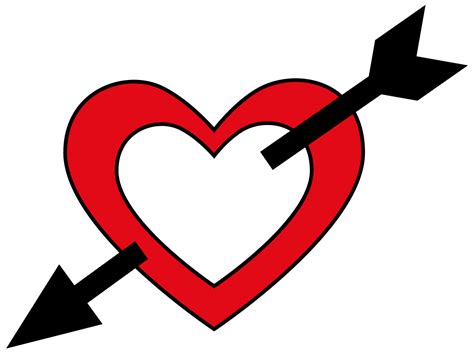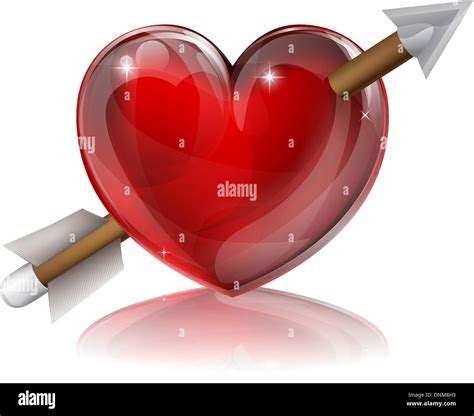The symbol of a heart with an arrow, often associated with Cupid's arrow, has been a timeless representation of love and affection across various cultures and historical periods. This iconic emblem is deeply rooted in mythology, folklore, and modern-day expressions of love and desire. The concept of a heart pierced by an arrow originates from ancient Greek and Roman mythology, where Eros (Greek) or Cupid (Roman), the god of love, would shoot arrows to inspire love or hate in both gods and mortals.
Key Points
- The heart with an arrow symbol has its roots in ancient mythology, symbolizing the power of love to both unite and divide.
- Cupid, the Roman god of love, is often depicted with a bow and arrow, highlighting his role in influencing love and desire.
- The symbol has evolved over time, with modern interpretations ranging from expressions of romantic love to platonic affection and even self-love.
- In art and literature, the heart with an arrow is used to convey the intensity and depth of emotional experiences, often symbolizing passion, vulnerability, and transformation.
- The psychological impact of the symbol can vary, evoking feelings of joy, longing, or melancholy, depending on the context and personal experiences of the individual.
Historical and Cultural Significance

The historical and cultural significance of the heart with an arrow cannot be overstated. In ancient Greek and Roman cultures, the myth of Cupid and his arrows was a central theme in understanding the complexities of love and human emotions. The symbol has been depicted in various forms of art throughout history, from ancient pottery to modern tattoos, each iteration offering a unique perspective on the universal human experience of love.
Mythological Origins
Mythologically, Cupid’s arrows were said to have the power to ignite love in those who were struck. However, the myth also mentions arrows that could induce hate or indifference, highlighting the complex nature of human emotions and the unpredictability of love. This duality of love and hate, as represented by Cupid’s arrows, underscores the multifaceted nature of human relationships and the heart’s capacity for both profound love and deep sorrow.
| Aspect of Love | Description |
|---|---|
| Romantic Love | Characterized by intense passion and desire, often symbolized by the arrow piercing the heart. |
| Platonic Love | Represents deep affection and friendship, with the heart and arrow symbolizing a bond that transcends romantic attachment. |
| Self-Love | Emphasizes the importance of loving and accepting oneself, with the arrow signifying personal growth and self-acceptance. |

Modern Interpretations and Uses

In modern times, the heart with an arrow has evolved to encompass a broader range of meanings. It is commonly used in Valentine’s Day cards, tattoos, and jewelry, symbolizing love, passion, and commitment. The symbol has also been adopted in various forms of media and art, serving as a visual shorthand for love, vulnerability, and the complexities of human emotion.
Psychological Impact
The psychological impact of the heart with an arrow symbol can be profound, evoking strong emotions and personal reflections. It can symbolize both the joy of finding love and the pain of heartbreak, serving as a reminder of love’s double-edged nature. The symbol’s versatility allows it to be interpreted in numerous ways, making it a universal and enduring emblem of human emotion.
What is the origins of the heart with an arrow symbol?
+The heart with an arrow symbol originates from ancient Greek and Roman mythology, specifically from the stories of Eros (Greek) or Cupid (Roman), the god of love, who would use his arrows to inspire love or hate.
How has the symbol evolved over time?
+Over time, the heart with an arrow has evolved to represent not just romantic love but also platonic affection, self-love, and the complexities of human emotions. It is used in various contexts, from art and literature to modern expressions of love and desire.
What does the heart with an arrow symbolize in modern culture?
+In modern culture, the heart with an arrow symbolizes love, passion, commitment, and the transformative power of love. It is a universal symbol that transcends cultural and linguistic barriers, speaking directly to human emotions and experiences.
In conclusion, the heart with an arrow is more than just a symbol; it is a powerful representation of human emotion, love, and the complexities of the human heart. Its evolution over time, from ancient mythology to modern expressions of love, underscores its enduring relevance and universal appeal. As a symbol, it reminds us of the transformative power of love, its capacity to both unite and divide, and its profound impact on the human experience.



